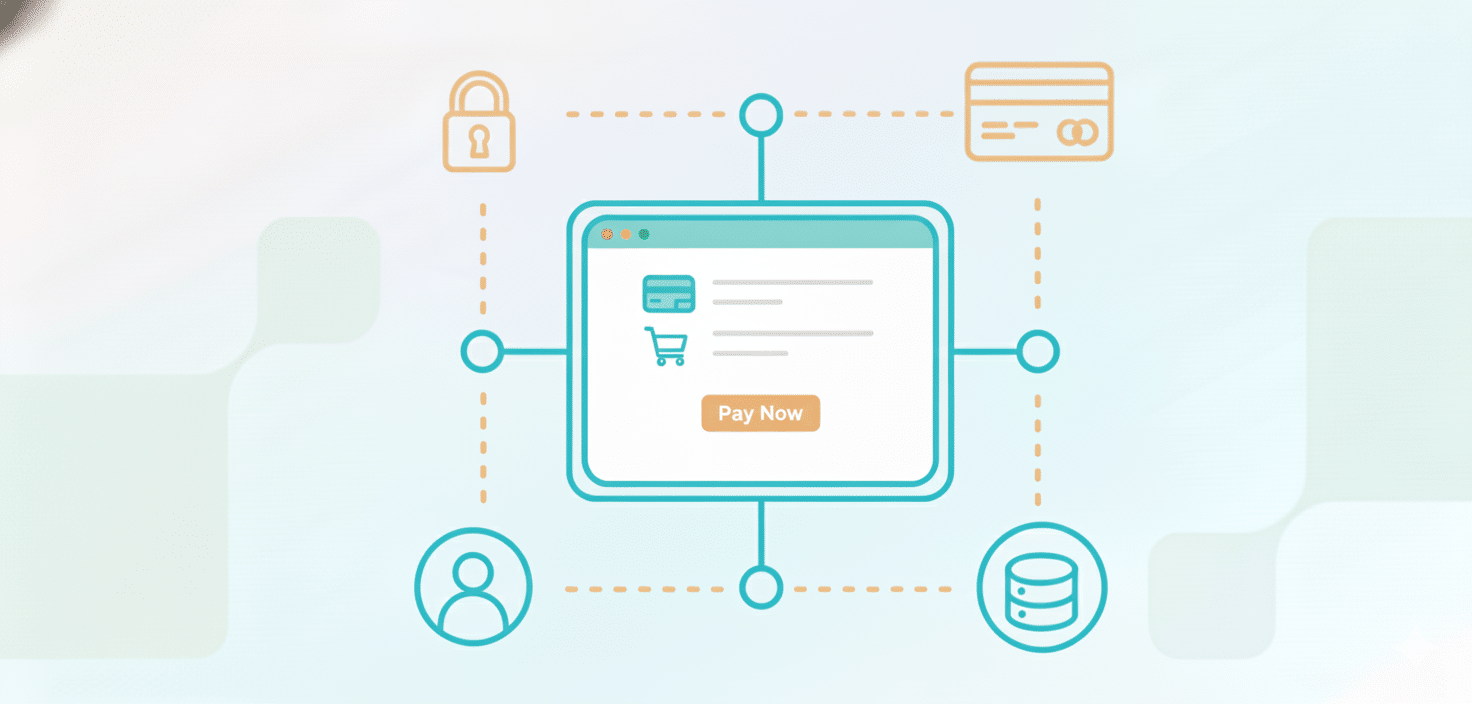Pagamenti SaaS
Cos'è il Checkout Incorporato SaaS?

Cos'è il Checkout Incorporato SaaS?
Un checkout SaaS integrato è quando l'esperienza di pagamento è completamente integrata all'interno di una piattaforma software-as-a-service (SaaS).
I clienti completano i loro acquisti senza essere reindirizzati a un sito web esterno per completare la transazione.
Questo metodo presenta diverse differenze rispetto all'approccio tradizionale di fatturazione degli utenti al di fuori delle loro app o siti web.
- migliora l'esperienza dell'utente eliminando la necessità di più clic o l'apertura di nuove finestre.
- Ha il potenziale di influenzare le entrate dell'azienda, incidendo sui tassi di abbandono del carrello e sull'efficienza.
Questa pratica è chiamata embedded perché il processo di pagamento — dalla selezione del prodotto al completamento del pagamento — è all'interno dell'interfaccia del prodotto SaaS.
In che modo il Checkout Incorporato SaaS è diverso dai sistemi di checkout tradizionali?
In un sistema di checkout tradizionale, quando un cliente clicca su “Acquista”, viene solitamente reindirizzato a una pagina di pagamento esterna ospitata da un processore di pagamento. Questa configurazione funziona, ma crea un'interruzione evidente nel percorso dell'utente.
Questo attrito può essere influenzato da un checkout integrato. Integra API o SDK di pagamento direttamente nel codice sorgente della piattaforma SaaS, consentendo agli utenti di inserire i dettagli della loro carta, scegliere piani di fatturazione o applicare codici promozionali all'interno della stessa interfaccia che stanno già utilizzando.
Perché le aziende SaaS stanno adottando modelli di checkout integrati?
I checkout integrati SaaS sono scelti dalle aziende SaaS per le seguenti ragioni:
- Comodità: I checkout integrati hanno un impatto diretto sui tassi di abbandono, accorciando il percorso dall'intenzione al pagamento.
- Controllano: Possono gestire prezzi, valute e opzioni di abbonamento all'interno dell'ecosistema dell'azienda SaaS.
- Dati: Tramite checkout integrati, le aziende SaaS possono raccogliere e accedere ad analisi relative ai propri clienti.
Quali tecnologie alimentano un checkout SaaS integrato?
Il checkout integrato richiede l'uso di API, SDK e componenti ospitati da parte dei processori di pagamento. Questi strumenti consentono agli sviluppatori di integrare un'esperienza di checkout personalizzata senza elaborare direttamente informazioni sensibili sulle carte.
Tipicamente, l'integrazione include:
- API di pagamento per l'elaborazione di carte di credito, portafogli digitali o trasferimenti ACH.
- API di fatturazione per la gestione degli abbonamenti, i rinnovi e le fatture.
- SDK lato client per il rendering di moduli di pagamento sicuri e la tokenizzazione dei dati delle carte.
- Webhook per tenere traccia di eventi come pagamenti riusciti, rinnovi falliti o rimborsi.
Come vengono gestite la sicurezza e la conformità in un checkout SaaS integrato?
Alla sicurezza dovrebbe essere prestata attenzione. Tenere presente quanto segue:
- Un checkout embedded SaaS in realtà non implica il salvataggio dei dettagli della carta sui vostri server.
- Moderno gateway di pagamento utilizzare la tokenizzazione e conformarsi allo standard PCI per eliminare la necessità di informazioni sensibili essere presentate in primo luogo.
- Il modulo incorporato consente la raccolta delle informazioni di pagamento tramite una sessione crittografata, dopo di che viene inviato al gateway di pagamento e viene generato un token.
- Tale token può quindi essere utilizzato per addebitare la carta, per rimborsi o per rinnovi senza la necessità di inserire l'intero numero di carta del titolare.
- Per comodità, la maggior parte degli operatori ha l'onere di conformarsi a normative di settore gestite—le elaborazione dei pagamenti, PCI DSS, SCA in Europa e le leggi locali pertinenti.
Quali sono i vantaggi aziendali dell'utilizzo di un checkout SaaS integrato?
Per un'azienda SaaS, l'utilizzo di un checkout integrato può influenzare i risultati dei ricavi. Ecco come:
- Tassi di conversione: Un processo più semplice può essere correlato a un aumento dei pagamenti.
- Fidelizzazione dei clienti: Fatturazione abbonamenti può influenzare i tassi di rinnovo e i livelli di abbandono.
- Impatto sul marchio: L'esperienza di checkout può incorporare aspetti distintivi del marchio.”
- Proprietà dei dati: Si riferisce alla possibilità di una comprensione più approfondita del comportamento dei clienti e delle entrate.
- Portata globale: Alcuni sistemi integrati sono progettati per funzionare con diverse valute e opzioni di pagamento.
Apre anche le porte a crescita guidata dal prodotto. Offrire opzioni di aggiornamento, rinnovo ed espansione all'interno dell'interfaccia quotidiana dell'utente può correlare più strettamente la generazione di entrate all'utilizzo del prodotto.
Qual è il futuro del checkout SaaS integrato?
Secondo lo scenario, il SaaS manterrà probabilmente la sua dominanza nell'economia digitale a lungo termine. Sembra che la verifica integrata sarà la norma, non l'eccezione. Le tendenze potrebbero includere:
- piattaforme di pagamento per fornire low-code e no-code strumenti per l'integrazione, il che rende più facile per i team non tecnici implementare rapidamente esperienze di verifica personalizzate.
- suggerimenti di prezzo tramite Intelligenza Artificiale, approfondimenti sulla fatturazione e analisi degli utenti in tempo reale – tutto questo integrato in modo impercettibile all'interno del prodotto.
Conclusione
Il checkout integrato SaaS consente che i processi di pagamento vengano realizzati all'interno della piattaforma SaaS, il che in definitiva può portare a una migliore esperienza utente. Questo è possibile tramite l'uso di API e SDK di fatturazione. In termini di tendenze future, i checkout integrati SaaS manterranno la posizione di rilievo.